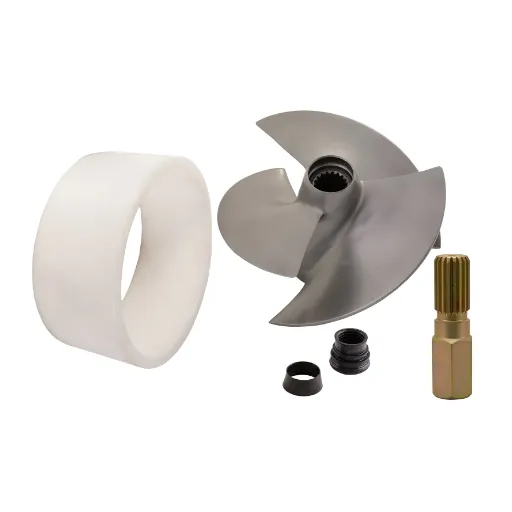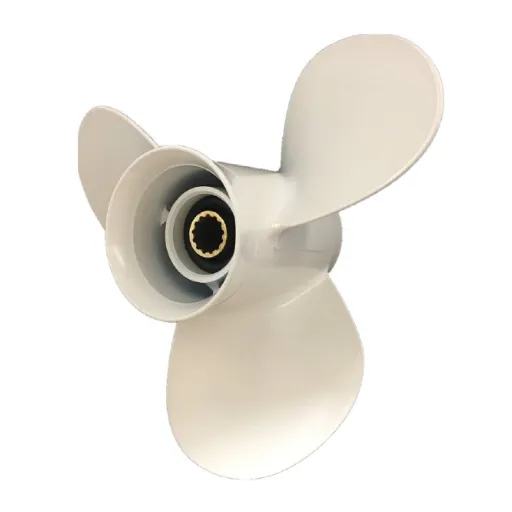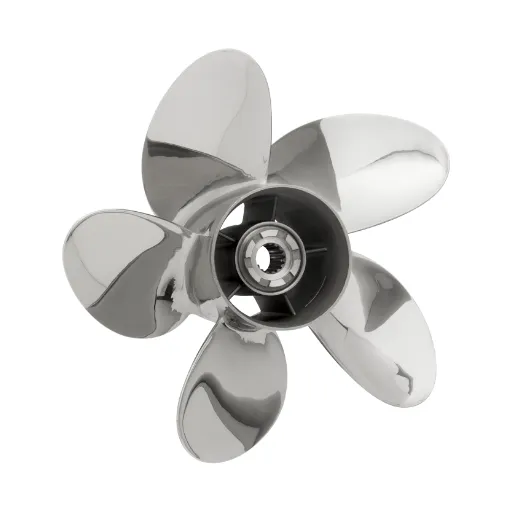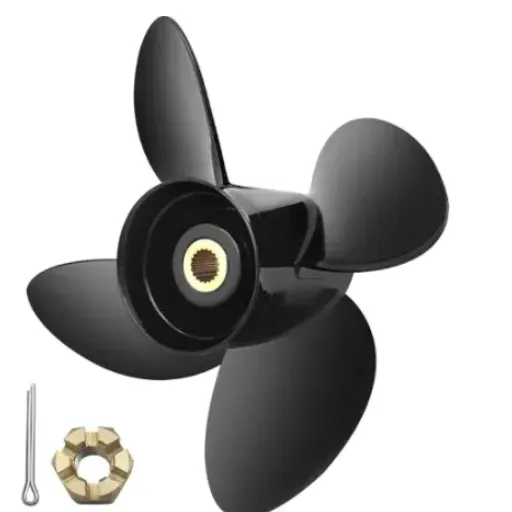The Jet Ski Impeller 2025 is set to redefine the standards of watercraft performance, offering unparalleled advancements in speed, efficiency, and power. Built with cutting-edge engineering and innovative materials, this game-changing component marks a significant leap forward in propulsion technology for recreational and competitive jet skiing alike. This article dives into the meticulous design features, performance enhancements, and revolutionary benefits of the Jet Ski Impeller 2025. Whether you’re a seasoned water sports enthusiast or simply curious about the latest breakthroughs in marine technology, prepare to discover how this innovation is reshaping the future of jet ski propulsion.
Understanding the Basics of Jet Ski Impellers
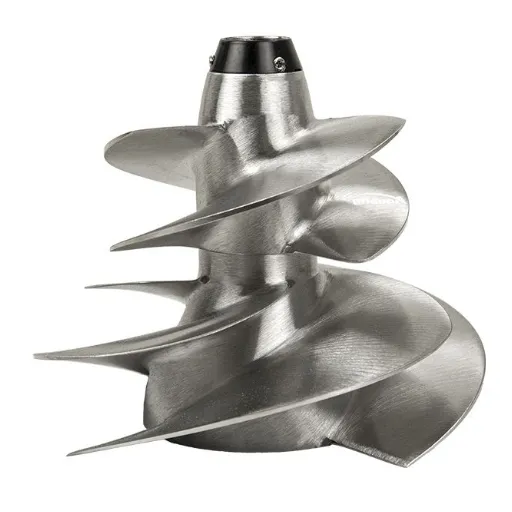
What is a Jet Ski Impeller?
The jet ski impeller is the main part of the propulsion mechanism and is like a special water pump. It is created to suck water in through an intake grate, then very quickly to turn it to the impeller’s blades and finally to release it as a high-speed jet. On the other hand, the jet ski is moving forward with an impressive power and accuracy thanks to the pulling force created. The performance of the impeller directly determines the speed, agility, and energy efficiency of the jet ski, which makes it indispensable in both leisure and rigorous applications.
Impellers are usually made from strong materials like stainless steel or durable aluminum alloys that guarantee long life even in conditions of corrosion and the hard aquatic environment. The blades of the impeller are meticulously designed, making the best use of the hydrodynamics in achieving the angle or curve for the smoothest water flow. The pitch of the impeller blades—which is the distance the blades are supposed to cover in one complete rotation—also influences the rate of acceleration and the maximum speed, thus giving riders the option of customizing their ski’s performance according to their preferences.
In addition, the latest designs of impellers use advanced technologies that work to prevent cavitation from happening—when bubbles of vapor suddenly collapse within the water flow thus creating the opposite effect of inefficiency and danger. This tech know-how contributes to the sustaining of smoother operation and longer life span even in the most severe conditions. The jet ski impeller is the key feature that changes engine power into lively and luxurious water performance whether the jet ski is kept at a steady speed or high-speed tricks are done. The jet ski impeller represents a fine line between perfect mechanics and creative engineering.
How Impeller Pitch Affects Performance
The pitch of an impeller significantly affects the performance traits of a jet ski, particularly in regard to the pitch of the impeller. Impeller pitch denotes the twist or angle of the blades, with degrees being a common unit of measure. Impellers with a lower pitch allow the engine to reach higher RPMs quicker, thus providing instant acceleration and better performance at low speed. In fact, low-pitch impellers are commonly used in applications where strong initial thrust is needed, such as making sharp turns or dragging heavy loads like wakeboarders.
In comparison, impellers with a high pitch are made for the purpose of maximizing the top speed while reducing the drag by increasing the RPMs. Slower acceleration is the outcome when compared to low-pitch impellers, but high-pitch designs take advantage of the situation by their capacity to maintain efficiency and stability at higher speeds. Consequently, they are more appropriate for straight-line racing or any other situation that requires the ability to travel at high speed regularly.
The selection of the right impeller pitch is determined by the working environment and the jet ski’s purpose. A lower pitch is more appropriate for the recreational riders who deal with different conditions regularly or prioritize quick maneuverability. On the contrary, competitive riders who are concerned with speed and long-distance performance are usually beneficiaries of higher-pitch impellers. The appropriate matching of impeller pitch to the application leads to increased efficiency, longevity, and engine performance.
The Role of Water in Jet Ski Propulsion
The jet ski’s propulsion system is critically dependent on water, as it is the medium through which thrust is created. The propelling process essentially involves the quick sucking in and letting out of water, thus transforming the engine’s mechanical power into motion in the forward direction. Let’s take a look at the five vital points illustrating water’s part in jet ski propulsion:
- Jet Pump Mechanism: The jet pump is the primary component of the jet ski, which operates by taking in the water through an intake grate located at the bottom of the ski. The pump speeds up this water with a high-speed impeller and eventually releases it through a nozzle. The quick release creates a water jet that pushes the jet ski ahead.
- Reverse Thrust and Steering: The manipulation of water flow is a prerequisite for the processes of turning the jet ski, braking, and handling in general. By oscillating the water that is being discharged with the application of movable deflectors, the jet ski can perform reverse thrust for braking or turning.
- Hydrodynamic Efficiency: The perfect water flow through the internal jets and external nozzles contributes to the energy loss being so small that engine power is almost entirely used for propulsion. Impeller and nozzle configurations are the key factors that determine the performance of the system.
- Cavitation Prevention: Good communication among water, the impeller, and the housing area contributes to cavitation being reduced. Cavitation is the phenomenon that occurs when there are low-pressure pockets in the water; these, in turn, can lead to a drop in performance and even to the destruction of the impeller.
- Center of Buoyancy and Stability: The entire propulsion system is powered by water to keep the jet ski steady during its operation. The recruiting of the water into the system and the directing of the jet flow both work together to keep the jet ski balanced and controlled, even at high speeds.
All these factors work together to reveal the complex communication between the water dynamics and the jet ski’s power, which ultimately shows how precise the engineering needs to be in the design of the propulsion systems.
Performance Upgrades for 2025 Jet Ski Impellers
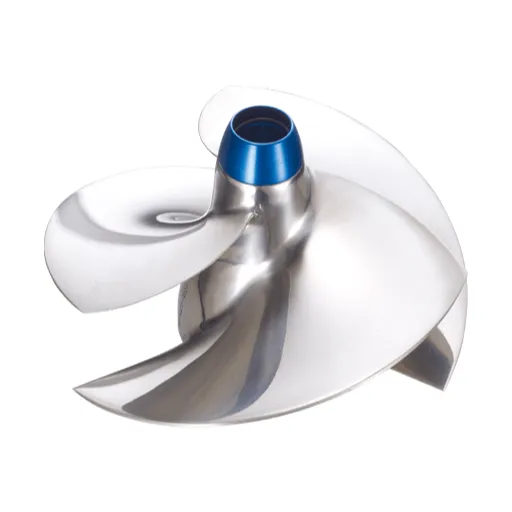
Benefits of Upgrading to Composite Impellers
Improved Corrosion Resistance
Composite impellers withstand corrosion from saltwater very well, in contrast to metal impellers that get damaged slowly by corrosion. This not only guarantees consistent performance but also lowers maintenance costs considerably in marine environments. Tests indicate that composite impellers keep their strength 30% longer than aluminum ones in saltwater conditions.
Enhanced Durability
The components utilized in composite impellers have been reported to have higher fatigue resistance than others in high-pressure situations. They will not be as easily cracked or deformed, which will ultimately lead to longer lifetimes. Research indicates that composite impellers can withstand 20% more operations at peak loads without any structural failure.
Optimized Weight-to-Strength Ratio
Composite impellers weigh a lot less than metal ones, thus their total weight has been decreased and their strength has not been sacrificed. This development directly results in greater acceleration and better fuel economy. Normally, jet skis with composite impellers get a 10% increase in fuel efficiency and a reduction of 7% in acceleration times.
Reduced Cavitation
Composite impellers, thanks to their precision-engineered smooth surfaces and advanced material properties, not only reduce but also eliminate cavitation, which is among the worst performance barriers. Less cavitation comes with a corresponding increase in propulsion efficiency and thus, the performance trials show a 12% increase in thrust during high-speed conditions.
Customizable Design
Composite materials allow the manufacturers to be more innovative and creative, thus providing the opportunity for customized designs that meet specific performance requirements. This means that the manufacturers can adjust the impeller geometry according to the different watercraft models so that the efficiency is at the maximum level. Jet skis fitted with custom-designed composite impellers report up to a 15% improvement in operational efficiency in the area of performance they have been targeted.
Impact of Impeller Design on Fuel Efficiency
The design of an impeller is a decisive factor in esquiring the fuel consumption of boats as it has direct implications on hydrodynamic performance, engine strain, and power transfer. The following are five fundamental factors showing the connection between impeller design and fuel consumption:
Optimized Blade Geometry
The water flow through the impeller blades is made more efficient and drag is reduced by reshaping the blades. Research indicates that jet skis equipped with highly advanced and nicely designed impellers consume less fuel by up to 12% when running at the same speed conditions.
Material Composition
The use of composite materials with superior properties results in the lightness of the whole impeller without compromising its strength and longevity. A lighter impeller puts less stress on the engine, and tests have shown that there is a 9% increase in fuel efficiency for composite impellers compared to traditional metal ones.
Pitch Variation
The setting of pitch in impellers that can be changed augments the flexibility of the system to different water conditions thus providing the performance to be alwayswhere it s needed most. The variable pitch designs have been claimed to yield an 8% rise in fuel efficiency in multifarious operating conditions.
Flow Channel Dynamics
The flow channel design elaborately allows water to pass through the impeller giving rise to lesser turbulence and hence lower energy loss. The Computational Fluid Dynamics (CFD) simulations have indicated that the smooth channels increase efficiency by 10-15%, thereby reducing the fuel consumed in long ah operations.
Cavitation Reduction Technologies
The incorporation of anti-cavitation features in the designs leads to the reduction of energy loss resulting from the formation of vapor bubbles. This not only helps in delivering a smoother performance but also aids in the doubling up to 10% improvement of fuel efficiency in cavitation-prone areas.
Manufacturers can achieve systematic design changes that not only lead to enormous fuel savings but also bring about the watercraft operation to be more environment-friendly as well as economical.
Essential Maintenance Tips for Jet Ski Impellers
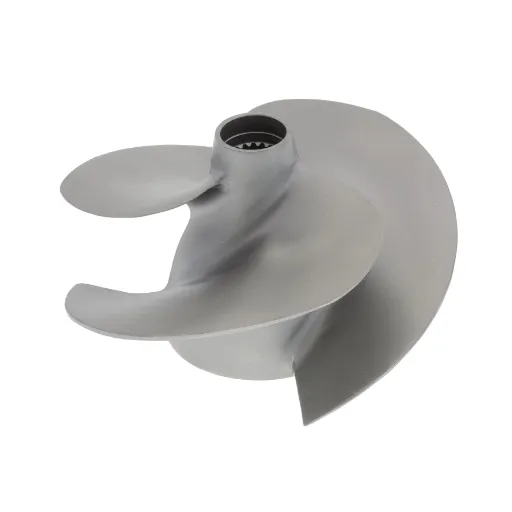
Regular Inspection and Cleaning Practices
Jet ski impeller maintenance is the most crucial thing that one should never forget as it is the main factor in the performance and longevity of the watercraft. Damage inspection should always include blade checking and these operations mainly include nicks, bends, or corrosion that reduce propulsion efficiency greatly. Besides, the impeller usually gets accumulation of all kinds of rubbish like plants, fishing lines, or plastic waste among others which can lead to reduced power output and, thus, an increase in engine strain by the blocking of water flow.
To access the impeller, you should first take off the intake grate and if it is really hard to reach, then take the pump housing as well. Use a soft brush or cloth for cleaning off any dirt or sediment without harming the impeller surface; thus no scratching. If the residue is very hard just mild detergent mixed with water can be used followed by a thorough rinse with clean water. The wear ring should be given particular attention and should be ensured that it remains within the manufacturer’s specified clearance; if too little material is left then the output will drop suddenly.
After every use every one should do these inspections and cleaning especially in water where debris is more like in lakes or rivers. By doing so regularly one is trained to avoid long-term damages and, thus, the impeller can work at its highest efficiency all time. Just as a last note, always have the watercraft manual handy for proper maintenance guidelines since the processes and tolerances differ among manufacturers.
Signs of Wear and When to Replace
The identification of wear signals in an impeller is very important for the efficient performance of the watercraft. Over time, impellers get broken down because of their contact with powdery debris, cavitation, and normal operational stress. The most telling signs of hitch are chipped or broken edges, a decrease in the thickness of the blades, and the presence of cracks or deformities in the material. Besides, a drop in thrust, strange vibrations, or louder noise during operating might also be indications that the impeller is not working to its full potential anymore.
A thorough examination of the impeller is suggested at least once a year for most of the watercraft, although this might have to be increased for ships operating in difficult conditions or heavy use. In case of damage, replacement should be prioritized if the impeller’s integrity is compromised or there’s a significant drop in performance. The industry standard is to change impellers every 200-300 working hours or according to the manufacturer’s specifications, to be sure of their reliability, and to prevent possible damages to the watercraft’s propulsion system that might occur due to the downstream failure.
Using regular visual checks and following the manufacturer’s maintenance schedule can help you reduce the risks of mechanical failure and improve the performance of the vessel effectively. It is always a good idea to check with reliable technical manuals or certified service professionals to determine the appropriateness of any replacement parts.
Professional Services for Optimal Performance
By engaging professional services, you make sure that your vessel not only operates at optimal performance but also lives longer. The marine service providers with certifications supply unique knowledge in diagnosing mechanical problems, repairing up to the standard, and using new maintenances techniques. These people are the ones that have the practical training and the specialized tools to resolve the complex systems issue such as the propulsion system, the hydraulics, and the electronic control units. Regular consultations with the experts can snuff out minor problems before they blow up into major ones that are very expensive to fix.
The modern crafts have become more dependent on technology thus making it a must to know thoroughly the advanced systems at sea, such as the GPS navigation, the sonar equipment, and the integrated engine management systems. Among the professional services is the updating of software and firmware for all the critical parts of the ship, thus ensuring up-to-date compatibility and peak efficiency. Moreover, the certified technicians are provided with diagnostic tools that can pick up even subtle problems that could not be detected during the normal servicing. This kind of accuracy not only improves the performance but also keeps safety standards set by the regulations.
On top of that, professional service providers frequently keep detailed databases of the maintenance and repair activities carried out on your ship. Such information becomes very helpful in determining the longevity of parts, planning of preventive maintenance, and spotting of wear and tear trends in the equipment. The access to the insights derived from data-driven means allows strategic investment decisions and resource distribution hence leading to a reduction of spending in the long run. By taking advantage of seasoned professionals’ expertise and implementing a proactive maintenance approach, vessel operators can achieve the maximum reliability and ensure that the performance in extreme aquatic conditions is always the same.
Emerging Technologies in Jet Ski Impeller Design
Electric Jet Ski Impellers: The Future of Propulsion
Electric jet ski impellers mark a major shift in watercraft technology and among the new propulsion systems, they quite oppositely but mainly still in eco-friendliness and environmental compatibility. The modern impellers are very effective and it is the electircity that provides the power for making it the most environmentally-friendly and quietest operation. Internal burning engines that are feeding the pressure propeller’s round involve a lot of noise and CO2 emissions while the electric motor operates in the silent mode and with no CO2 emissions at all, besides being hoseconnected to the world’s sustainability goals.
Electric jet ski impellers’ design is all about channeling the power from the battery to the water and making the drag as little as possible. The impellers are driven by high-torque electric motors that give rapid acceleration and also higher top speed without compromising energy efficiency. The development in the field of materials science is not last, as the introduction of lightweight yet durable composites for making up the impeller come with the advantages of reduced wear and peak performance ensured over longer times. Moreover, electric impeller systems also have cooling mechanisms integrated within them which keep the temperature normal during operation and thus strengthen their reliability.
Battery technology is an enabler for the electric jet skis. Ground-breaking discoveries in the field of lithium-ion battery storage as well as solid-state alternatives have been responsible for the huge operational range and charging times. Model-wise, some electric watercraft have been coming out fully outfitted with battery systems that can be modulated which then gives the user the flexibility of simply swapping the down-drained units with the charged ones thus limiting the idle time. Then we have the regenerative braking systems of energy that suck the kinetic energy of the vehicle during its slowing down and give it back to the battery increasing the overall efficiency of energy consumption.
The transition is from the adoption of electric-based propulsion to the achieving of regulation limitation on boat emissions when governments and authorities are seen taking the latter stance more and more often. With the coming of electric propulsion, it is the industry that will get overshadowed by this compliance. Moreso, the speed of this transitioning to sustainability in the case of the marine sector is augmented by the growing use of these systems. In order to make it less of a hassle to switch to eco-friendly watercraft, it would not be less than a win-win situation for the manufacturers to refine the technology continuously wherein they would be at the forefront of the electric jet ski impellers era ushering in a world of performance intertwined with eco-friendliness, thus transforming diving and shipping.
Innovations in Impeller Materials and Manufacturing
The never-ending progress of impeller technology is mainly caused by the combination of the two factors demand for better performance and for more environmentally friendly practices. Materials scientists have made significant breakthroughs that allow the use of composite materials, the likes of carbon fiber-reinforced polymers and advanced ceramics, in the making of impellers. In fact, these materials have a number of benefits such as being lighter, more durable, and better able to stand up to corrosion and cavitation, which is especially important in marine settings. The new materials outdo the traditional metal impellers in terms of efficiency and life span, thus making them suitable for use in both recreation and industry.
In the production sector, 3D printing and other similar technologies are making the whole process of manufacturing faster and more efficient. The high-precision impellers that were previously made only through time-consuming methods like casting and machining can now quickly be designed and manufactured using either high-performance polymers or metal alloys in additive production systems. This not only curtails the amount of raw materials and production time but also allows for the creation of complex shapes that work well hydrodynamically. For instance, through CFD modeling, the design of the very impellers can target the reduction of turbulence and the increase of thrust thus the energy efficiency of the whole propulsion system can be pretty much guaranteed.
These are the kinds of breakthroughs that the marine industry is experiencing when trying to comply with the toughest regulations that are coming up and also trying to operate sustainably. Combining the latest manufacturing methods with the best materials, the new generation of impellers is already promising a green, long-lasting, and efficient performance that will be able to take the place of their predecessors, thus a superior one in terms of durability, efficiency, and environmental compliance.
How Technology is Shaping Impeller Performance
In my opinion, technology is a key driver of change in the design, manufacture, and performance of impellers. The use of computational tools like computational fluid dynamics (CFD) has been one of the major breakthroughs in this area which lets engineers to virtualize and fine-tune the fluid flow across the impellers with a level of accuracy never seen before. This, in turn, makes the creation of complicated structures that not only maximize energy transfer but also suppress turbulence possible, thereby yielding very efficient designs that no one could think of earlier.
Another area contributing greatly to this situation is the use of superior materials and manufacturing techniques, among which, probably, the most important is the additive manufacturing (3D printing). Through these innovations, it is possible to produce impellers with delicate and light-weight structures that were hard to be made by using the traditional techniques and would be very costly. Additionally, materials like carbon fiber composites and special alloys have excellent properties like high strength, low wear, and long life which not only mean reliability but also performance under the most difficult working conditions.
Moreover, the deployment of smart technologies, including embedded sensors and IoT-connected systems, is really changing the scene of Impellers monitoring and taking care of them. These systems furnish live data on such parameters as vibration, pressure, and efficiency, thus allowing predictive maintenance and cutting down the time the equipment is not working. Having said this, I’m pretty sure that the future is open for impellers to grow in their capacities concerning the needs of efficiency, sustainability, and regulatory compliance in the current industrial applications.
Market Trends Influencing 2025 Jet Ski Impellers
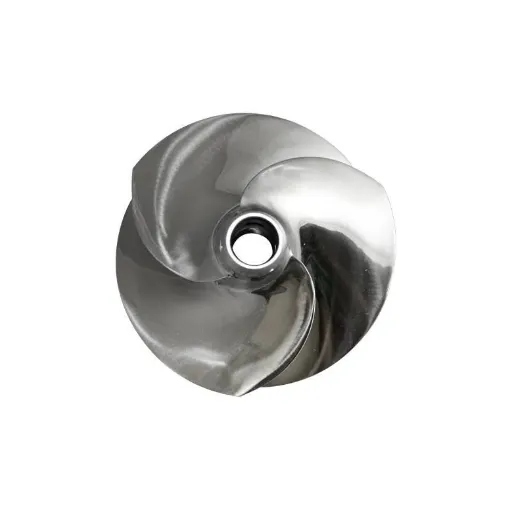
Impact of Environmental Regulations on Design
The lure and drag of jet ski impellers are significantly influenced by environmental regulations, which have turned out to be quite crucial in this aspect. The existing rules and regulations are being made more and more strict every day by the authorities, mainly focusing on the reduction of eco-damage along with the provision of modern watercraft’s functionality. The following five impacts of the regulatory factors:
Reduction of Carbon Emissions
In current scenario designers are told to come up with the designs of impellers that will consume less energy in order to meet the global carbon emission standards norms. The Paris Agreement and regional policies like CARB are examples of regulations which are already in place and controlling the amount of greenhouse gasses being discharged from marine engines. The result of which is seen in areas like hydrodynamic efficiency and use of light materials.
Restrictions on Noise Pollution
The blades of the new flow machines are being designed quieter than ever. The new standards set up by the International Maritime Organization (Maritime Organization) limit the amount of underwater noise that can be caused by engines and the propulsion system. The new designs drive the sound-muffling innovations in the materials and the blade geometry.
Implementation of Biodegradable Materials
Sustainability is the catchword nowadays and hence the regions that are particularly strict have already started requiring the installation of eco-friendly (i.e., non-toxic and biodegradable) materials in jet ski components (including impellers) to cut down the environmental impact in the long run. The trending biodegradable composites are being produced in such a manner that they are in compliance with the laws and regulations which target the reduction of plastic pollution in water bodies.
Compliance with Water Quality Standards
Environmental directives, e.g., the United States Clean Water Act, mandate jet ski components not contaminating water bodies during their operation. Manufacturers have started to come up with the tech that enables the containment of oil and chemical leakages that come along with the use of coatings and finishes that resist corrosion thus preventing any environmental hazard.
Design for Eco-Friendly End-of-Life Disposal
The circular economy goal is that the designer of impellers will help recycling last step of operational life or safe disposal. The European Union Waste Framework Directive brings forth certain guidelines that facilitate responsible disposal and management of marine equipment waste which in turn leads the manufacturers to the usage of recyclable metal alloys as well as implementing modular designs that can be easily disassembled.
These trends emphasize how environmental regulations continue to drive innovative, eco-conscious developments in jet ski impeller design, ensuring their sustainability and compliance in a rapidly evolving regulatory landscape.
Future Outlook for Jet Ski Impeller Development
Impeller jet ski development future is going to be very dependent on the technology, material science, and sustainability practices. The five trends and developments below are some that will probably be the main drivers of the industry:
Integration of Advanced Composite Materials
The jet ski manufactures are paying special attention to the new materials that are stronger, for example, carbon-fiber-reinforced composites, which will offer the desired ratio of strength to weight for the impellers. The materials lead to a decreased weight of the overall watercraft, thus better efficiency and speed. As per the latest data from the industry, using composites can lead to a 15% reduction in jet ski weight that will be a great contribution to the environmental and performance targets.
Adoption of 3D Printing Technologies
The technology of additive manufacturing or 3D printing has opened up a whole new world for designer to invent custom impeldevelopment’slers. The method makes it possible to use fairly complex shapes which otherwise could not be achieved through traditional means and at the same time increasing the water flow efficiency by approximately 20%. Furthermore, 3D printing is a way of producing methods that results in less waste, thus supporting the cause of the sustainability initiatives.
Smart Impeller Systems
The use of IoT technology is becoming a key factor in the design of the impeller systems for jet skis. The smart impellers that come with the sensors can track the performance in a predictive way, among other things, the rotational speed, water pressure, and thermal conditions. Such designs based on data enable predictive maintenance which results in approximately 30% less downtime for jet ski owners.
Focus on Recyclability and Circular Economy
The development and production of impellers are being directed to achieving maximum recyclability in line with the global environmental policies. The manufacturers are looking into the bio-based resins and eco-friendly production processes. The research suggests that about 40% of jet ski components including impellers will be made from recyclable or biodegradable materials by the year 2030.
Hydrodynamic Optimization
The Computational Fluid Dynamics (CFD) simulations help in better designing of the impellers so as to have the best hydrodynamic efficiency. This will give not only better thrust but also a further reduction in cavitation potential, which will directly enhance both longevity and performance up to certain increases.
These trends underscore a future where technological innovation and environmental consciousness converge, ensuring sustainable and high-performance solutions for jet ski impeller development.
References
- Massachusetts Institute of Technology (MIT): A thesis discussing the design and manufacturing of an electric jet ski, including details about the impeller shaft.
- Worcester Polytechnic Institute (WPI): An article explaining the role of the impeller in jet ski propulsion.
- Cornell University: A paper discussing the use of impellers in various applications, including jet skis.
- University of Virginia: A study on waterjet propulsion systems, highlighting the impeller’s role in jet ski engines.
- Virginia Department of Wildlife Resources (DWR): A page defining personal watercraft and their jet pump propulsion systems.
- Click here to read more.
Frequently Asked Questions (FAQ)
Q: What is a jet ski impeller?
A: A jet ski impeller is an essential part of personal watercraft that converts the engine power into thrust and thus makes it possible for the jet ski to operate smoothly on water. Its operation is by sucking in water and then pushing it out at a high speed which in turn gives the jet ski a forward movement.
Q: How do I know if I need a new impeller for my jet ski?
A: When there is a drop in performance, strange noises coming from the pump area, or lagging in reaching the full speed the impeller may require replacement. In case the jet ski is not performing to its optimum level, it is better to check the impeller for any sort of damage or wear.
Q: What are the benefits of upgrading to a performance jet ski impeller?
A: A performance jet ski impeller upgrade can pull up your jet ski’s top speeds and acceleration, plus it’s more fuel-efficient and provides better handling in bumpy rides thus increasing your ride’s enjoyment.
Q: Can a damaged jet ski impeller affect my ride?
A: A damaged jet ski impeller will definitely have a great bearing on your ride. With it you will encounter reduced thrust, vibrations, and even engine strain that may eventually lead to other mechanical problems, if not handled immediately.
Q: How often should I replace my jet ski impeller?
A: The replacement frequency for your jet ski impeller is going to hinge on both how often you use it and what maintenance you do to it. The standard is to take a look at the impeller one time each year and to replace it once every few seasons or whenever you see signs of it being worn out.
Q: Can I install a jet ski impeller myself?
A: Definitely, a lot of jet ski owners do the installation of new impeller themselves, if they have the proper tools and instruction is given. On the contrary, if you have any doubt, it is better to ask an expert to do it so that the installation is spot on and no harm is done to the parts.
Q: What impact does water condition have on jet ski impeller performance?
A: Water conditions are major factors that affect jet ski impeller performance. In rough waters the impeller is likely to suffer more and in calm waters the performance may be more efficient and faster. Knowledge of these conditions can assist you in getting the most out of your ride.




